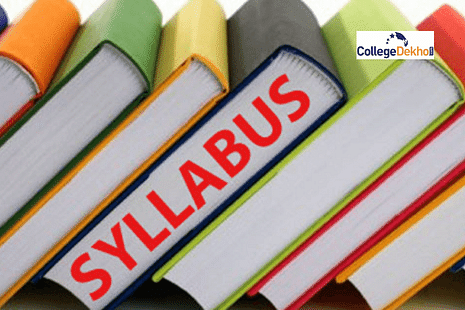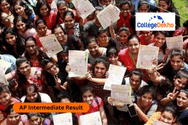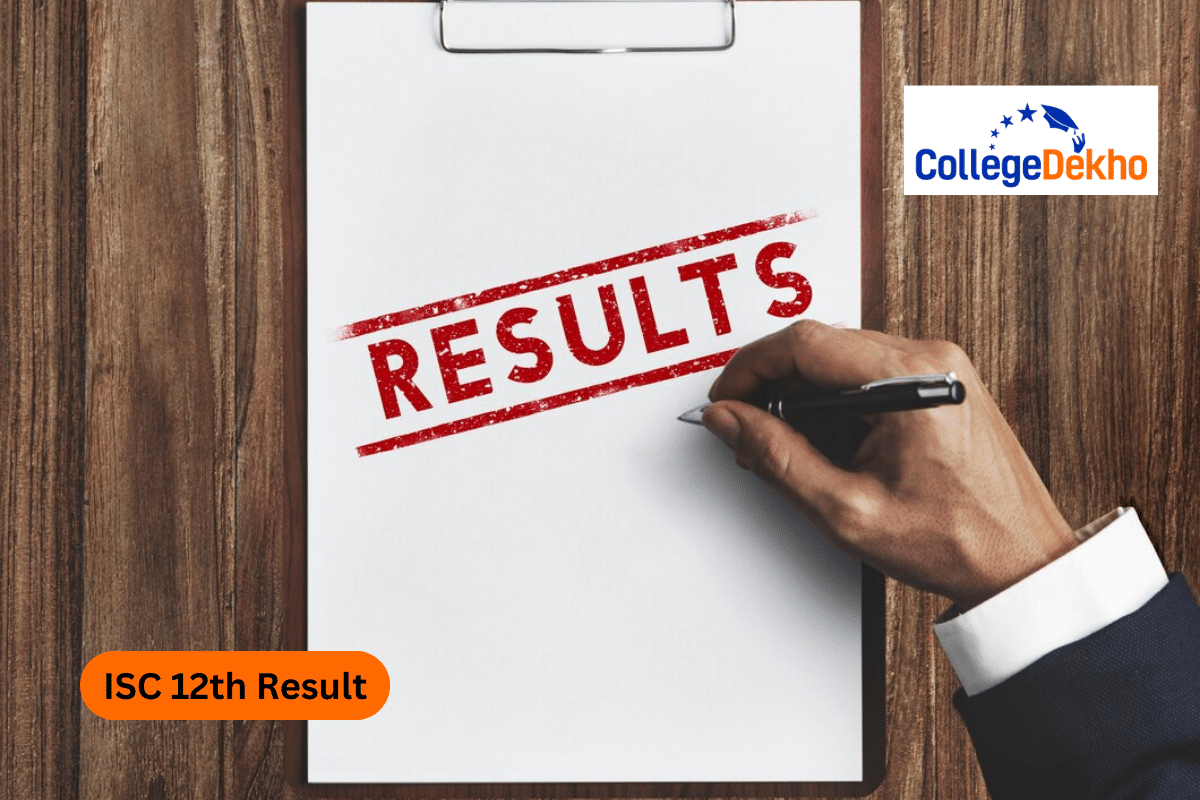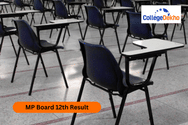ISC Class 12 Science Syllabus 2023-24 was revised by the Council and is available on the board’s official website, cisce.org. CISCE revised the syllabus for 14 subjects for the AY 2023-24. Check out the topic-wise ISC 12th Science Syllabus 2023-24.


Never Miss an Exam Update
ISC Class 12 Science Syllabus 2024-24 was revised by CISCE. Students appearing for the ISC Class 12 exam 2024 session can easily download the ISC 12th Science syllabus 2024 from the official website, cisce.org. CISCE revised the ISC 12th syllabus for subjects like Physics, Chemistry, English, Mathematics, Biology, Accounts, Geography, Political Science, etc from all three streams. ISC Class 12 Syllabus 2024-24 for subjects apart from those included in these 14 subjects remain the same. Every subject's marking scheme and exam format are also included in the ISC 12th science syllabus 2024-24 PDF. To perform well in the exam, students must be well-versed in the ISC syllabus for class 12 which is divided into theoretical and practical papers. Each paper i.e. Physics, Chemistry, Maths, Biology, etc has a different weightage.
The total marks for each subject in the ISC Class 12 exam 2024 is 100. The maximum mark for the subjects with only project work will be 80. For subjects with both practical and project work, the theory paper will be held for a total of 70 marks. Students can download the syllabus by selecting a subject from the list below to learn about all the chapters and subjects. Students must be familiar with the ISC 12th exam pattern 2024 in addition to the syllabus. The exam format familiarises one with the number and type of questions that will be asked. Students can go through the article below to learn more about the ISC 12th science syllabus 2024-24.
ISC Class 12 Science Syllabus 2024-24 Highlights
To prepare for their board exams, all students are required to go through the revised ISC 12th syllabus 2024. The paper format includes critical information like topic requirements, ISC marks distribution in 2024, question patterns, etc. ISC Board exams are anticipated to take place in February or March 2024, and the schedule will be made public in December 2022. Below are the highlights of ISC Class 12 Science Syllabus.
Particulars | Details |
|---|---|
Name of Exam | Indian School Certificate (ISC) |
Name of Board | Council for the Indian School Certificate Examinations (CISCE) |
Official Website | cisce.org |
Level of the Exam | National level |
Frequency | Once in a year |
How to Download ISC 12th Science Syllabus 2024 PDF?
Students can access the official cisce.org website and the direct links provided below to get the Class 12th ISC syllabus in PDF format. To get the ISC syllabus for Class 12's entire courses, follow these easy steps:
- Visit cisce.org, the official website.
- The "Publications" menu can be accessed from the navigation bar and will take you to a new page.
- The ISC Class 12 Syllabus 2024 PDF Download link should be clicked.
- Click on any subject's link to the www.cisce.org syllabus 2024 class 12 on the next page.
- The screen will display a PDF document.
- ISC 12th syllabus 2024 PDF is now available for students to download to their devices.
- For easy access, print out the ISC reduced syllabus 2024.
ISC Class 12 Science Syllabus 2024 PDF Download Link
As an alternative, students can get the direct download links for the ISC syllabus 2024 for Class 12 below. Students can use this ISC 12th class curriculum as a guide while preparing for their Semester 1 and Semester 2 exams to improve their grades in the 2024 ISC 12th result.
| ISC Class 12 Science Subject | Download Pdf |
|---|---|
| Biology | Click here |
| Chemistry | Click here |
| English | Click here |
| Mathematics | Click here |
| Physics | Click here |
ISC Class 12 Science Syllabus 2024-24
Below is the ISC class 12 syllabus for scientific streams for 2022-2024. The tables provide a brief overview of the ISC 12th course. Students can use the above-linked pdf to acquire the Class 12 updated curriculum. As an alternative, users can obtain the most recent ISC board syllabus for every subject.
ISC Class 12 Science Syllabus for Physics
(I). Only S. I. Units are to be utilised for teaching and learning, as well as when responding to questions unless otherwise stated. (ii) All physical quantities must be defined along with their units and dimensions when they are presented. (iii) All topics, excluding those from which they are expressly omitted or for which only qualitative treatment is necessary, include numerical difficulties.
Paper-1 Theory 70 Marks
| Unit | Topics | Marks |
|---|---|---|
| Electrostatics | Electric charges and fields, Coulomb’s law, electric dipole and dipole moment, Gauss’s theorem, electrostatic potential, potential energy, and capacitance, dielectric constant | 15 |
| Current Electricity | Mobility, drift velocity, Ohm’s law and its proof, internal resistance of a cell, Kirchhoff’s law, free electron theory | |
| Magnetic Effects of Current and Magnetism | Moving charges and magnetism, Oersted’s experiment, Biot-Savart law, Ampere Circuital Law, torque, moving coil galvanometer, magnetism and matter, force on a moving charged particle in magnetic field | 16 |
| Electromagnetic Induction and Alternating Currents | Electromagnetic induction, alternating current, self-induction, variation of voltage and current in an AC circuit, power associated with LCR circuit, AC generators | |
| Electromagnetic Waves | Displacement current, electromagnetic waves, electromagnetic spectrum | 02 |
| Optics | Ray optics and optical instruments, reflection of light, refraction of light, refraction through a prism, refraction at a single spherical surface, ray diagram and derivation of magnifying power of a simple microscope | 18 |
| Dual Nature of Radiation and Matter | Wave front and Huygen’s principle, interference, Young’s double slit experiment, fringe width, single slit Fraunhofer diffraction | 12 |
| Atoms and Nuclei | Alpha-particle scattering experiment, Rutherford’s Atomic Model, Bohr’s Atomic Model, hydrogen spectrum, composition and size of nucleus, mass-energy relation, mass defect, nuclear reactions, nuclear fission, nuclear fusion, atomic masses, and nuclear density, nuclear energy | |
| Electronic Devices | Semiconductor electronics, semiconductor diode, energy bands in solids, junction diode and its symbol, LED | 07 |
Paper-II Practical Work (15 Marks)
The majority of the experiments used for lab work and practical exams fall into one of two categories: either ray optics experiments or current electrical experiments. To eliminate parallax between a needle and the actual picture of another needle is the primary skill needed in group I Understanding the circuit diagram and making connections precisely by the provided diagram are crucial in group (ii). You should pay attention to things like the polarity of the cells and meters, their range, zero error, least count, etc. A graph is a useful and efficient tool for displaying measurement findings. It is a crucial component of the experiment. On the Practical exam paper, there will be one graph.
Candidates are urged to carefully study the question paper and complete the tasks under the instructions provided. They are typically not required to write the experiment's instructions, formulas, or safety precautions, or to draw the figures, circuit diagrams, etc. The tabular form should be used to record observations.
ISC Class 12 Science Syllabus for Chemistry
The two papers in chemistry will cover theory and application. There will be a 70-point theory exam and a 30-point practical exam.
Part -1 Theory (70 marks)
| Unit | Topics | Marks |
|---|---|---|
| Solutions | Normality, molality, molarity, mole fraction, solubility of gases in liquids (Henry’s Law), Raoult’s Law for volatile solutes and nonvolatile solutes, colligative properties, osmotic pressure, abnormal molecular mass, Van’t Hoff factor | 25 |
| Electrochemistry | Electrolytic and electrochemical cells, electromotive force (emf) of a cell, Nernst equation and its application to chemical cells, relation between Gibbs energy change and emf of a cell, Kohlrausch's Law of electrolysis and Faraday’s Laws of electrolysis, Galvanic cells | |
| Chemical Kinetics | Rate of a reaction, factors affecting rate of reaction, rate law and specific rate constant, integrated rate equations and half-life, concept of threshold and activation energy, Arrhenious equation, law of mass action | |
| d and f-Block Elements | Position in the periodic table, transition metals, general trends in properties of the 3d-series of transition metals, preparation and properties of K2Cr2O7 and KMnO4, Lanthanoids and actinoids, | 14 |
| Coordination Compounds | Definition of ligands, coordination number, isomerism, Werner's theory, VBT and CFT, valence bond theory of coordination compounds, crystal field theory, stability of coordination compound | |
| Haloalkanes and Haloarenes | Nature of C–X bond, nomenclature, substitution reactions, uses and environmental effects of - dichloromethane, trichloromethane, tetrachloromethane, iodoform, freons and DDT, nucleophilic substitution reactions, elimination reaction (Saytzeff’s rule), Wurtz’s reaction, Grignard’s reagent preparation, Chloroform and iodoform, structure of freons, preparation of haloarenes by Sandmeyer’s and Gattermann’s reaction, by electrophilic substitution | 31 |
| Alcohols, Phenols, and Ethers | Alcohol – Classification, general formula, structure and nomenclature, methods of preparation, physical and chemical properties (of primary alcohols only), identification of primary, secondary and tertiary alcohols, mechanism of dehydration, uses with special reference to methanol and ethanol Phenols – Classification and nomenclature, methods of preparation, physical and chemical properties, acidic nature of phenol, electrophilic substitution reactions, uses of phenols, preparation of phenol from diazonium salt, chlorobenzene (Dow’s process), manufacture from Cumene, Bromination, nitration and sulphonation (Electrophilic substitution reactions), Kolbe’s reaction (formation of salicylic acid), Reimer – Tiemann reaction Aliphatic Ethers – General formula, structure and nomenclature, methods of preparation, physical and chemical properties, uses, Williamson’s synthesis Aryl Ethers – Physical properties, preparation of anisole (Williamson’s synthesis), electrophilic substitution (halogenation, nitration and Friedel-Crafts reaction) | |
| Aldehydes, Ketones, and Carboxylic Acids | Aldehydes and Ketones – Nomenclature, structure of methods of preparation of aldehydes and ketones, physical and chemical properties, mechanism of nucleophilic addition, reactivity of alpha hydrogen in aldehydes and uses, aromatic aldehyde (Benzaldehyde) lab preparation from toluene by oxidation with chromyl chloride Carboxylic Acids – Classification, general formula and structure of carboxylic group, nomenclature, acidic nature, methods of preparation, physical and chemical properties and uses, classification of mono and di carboxylic acids with examples | |
| Organic Compounds containing Nitrogen | Aliphatic Amines – General formula and, classification of amines, structure of the amino group, nomenclature, methods of preparation, physical and chemical properties, uses, identification of primary, secondary and tertiary amines Aniline – Preparation reduction of nitrobenzene, physical properties, chemical properties, Cyanides and Isocyanides, diazonium salts | |
| Biomolecules | Carbohydrates – Definition, classification (aldoses and ketoses), monosaccahrides (glucose and fructose), D-L configuration oligosaccharides (sucrose, lactose, maltose), polysaccharides (starch, cellulose, glycogen), importance of carbohydrates, test for glucose and fructose, disaccharides – structures of sucrose, maltose and lactose (glycosidic linkage), polysaccharides – starch, cellulose, glycogen Proteins – structural units of proteins, basic idea of - amino acids, peptide bond, polypeptides, proteins, structure of proteins - primary, secondary, tertiary structure and quaternary structures (qualitative idea only), denaturation of proteins, enzymes, hormones - elementary idea only Vitamins A, B, C, D, E and K: classification (fat soluble and water soluble), deficiency diseases Nucleic Acids – DNA and RNA |
Paper-2 (Practical Work-15 Marks)
The following experiments must be finished by applicants:
1. Titrations,
first Potassium manganate (VII)/ammonium iron (II) sulphate and potassium manganate (VII)/oxalic acid are two examples of oxidation-reduction titrations.
The candidate might be asked to calculate the purity level of a substance and the quantity of water needed for crystallisation in hydrated salts. Such tests will provide sufficient operational information, including the ability to identify the end point.
2. Study of the rate of reaction.
The candidates will be required to conduct an experiment on the rate of reaction, for example, the reaction between magnesium and dil. sulphuric acid/dil. hydrochloric acid (using different concentrations), sodium thiosulphate and hydrochloric acid (using different concentrations for either), after receiving full instructions.
3. Identification of the following compounds and functional groups based on observations
4. Characteristic tests of carbohydrates and proteins
5. Experiments related to pH change using pH paper or universal indicator.
6. Electrochemistry
ISC Class 12 Syllabus for Biology
Paper-I (Theory 70 Marks)
| S.No | Total Unit | Weightage |
|---|---|---|
| 1. | Reproduction | 16 Marks |
| 2. | Genetics and Evolution | 15 Marks |
| 3. | Biology and Human Welfare | 14 marks |
| 4. | Biotechnology and its applications | 10 Marks |
| 5. | Ecology and Environment | 15 Marks |
| Total | 70 Marks |
Paper- 2 (Practical work- 15 Marks)
Taxonomy: Investigate the features of flowers through flower dissection, the creation of floral formulas, and diagrams of the families listed below:
I Malvaceae: Hollyhock or China rose.
(i). Leguminosae: Papilionaceae subfamily, type: Sweet pea, Pea, Bean, Sesbania, Clitoria (single flower).
(iii)Solanaceae: Solanum nigrum, Petunia, Datura, Brinjal Flower.
(iv)Liliaceae: type Onion or Amaryllidaceae: type Lily, Spider Lily, Tiger Lily, Tube Rose, and Gladiolus.
2). Simple biochemical and physiological experiments
3). Making the slides
(i). Pollen grain germination in a nutritional media.
(ii) T.S. of any locally accessible flower's ovary to reveal marginal or axile placentation
(iii). T.S of stem of a hydrophyte.
(iv). T.S of a xerophytic leaf's (Nerium).
(v) L.S. of soaking monocot and dicot seeds (corn, wheat, pea, and bean seeds).
4). Spotting: Each spot will have three minutes to identify it, create a labelled diagram, and write at least two defining qualities.
ISC Class 12 Science Syllabus for Maths
Three sections, A, B, and C, make up the syllabus.
Candidates must complete Section A. Candidates will be able to choose whether to attempt questions from Section B or Section C.
Section- A (60 Marks)
| S.No | Unit | Weightage |
|---|---|---|
| 1. | Relation and Function | 10 Marks |
| 2. | Algebra | 10 Marks |
| 3. | Calculus | 32 Marks |
| 4. | Probability | 13 Marks |
Section- B (15 Marks)
| S.No | Unit | Weightage |
|---|---|---|
| 1. | Vectors | 5 Marks |
| 2. | Three Dimensional Geometry | 6 Marks |
| 3. | Applications of Integrals | 4 Marks |
Section- C (15 Marks)
| S.No | Units | Weightage |
|---|---|---|
| 1. | Application of Calculas | 5 Marks |
| 2. | Linear Regression | 6 Marks |
| 3. | Linear Programming | 4 Marks |
Quick Links:
ISC Class 12 Science Syllabus 2024-24 Exam Pattern
The following table contains the ISC class 12 exam schedule. Some courses, like English, Math, etc., only have a theory paper, according to the ISC Syllabus 2022–23. In other disciplines, there will be one theory paper and one project or practical assessment. Each paper has a varied weightage. The theory paper exam will last three hours.
| Subject | Paper | Marks |
|---|---|---|
| English | English Language | 100 |
| Literature in English | 100 | |
| Maths | Theory | 80 |
| Project Work | 20 | |
| Physics | Theory | 70 |
| Practical | 15 | |
| Project Work | 10 | |
| Practical File | 5 | |
| Chemistry | Theory | 70 |
| Practical | 15 | |
| Project Work | 10 | |
| Practical File | 5 | |
| Biology | Theory | 70 |
| Practical | 15 | |
| Project Work | 10 | |
| Practical File | 5 |
ISC Class 12 Science Syllabus 2024-24 Preparation Tips
Read and thoroughly consider the Class 12 ISC revised syllabus, making sure to check all the significant topics that are given extra weight.
- To score an A+ in mathematics, start practicing previous years’ question papers and mock papers regularly. Practicing BSEB 12th previous years question papers regularly will also help students know about the exam pattern and manage their time.
- Apply shortcuts to some topics like Algebra and Trigonometry to solve the sums quickly. Go through the reference books and learn these shortcuts to save time in the exam while cross-checking the answer.
- Biology involves memorizing a lot of definitions, scientific names and concepts. The biology paper includes many diagram-related questions. Students must practice the diagrams with labels.
- Practice the previous year papers and sample papers as much as possible within the given time limit.
- One of the simplest ways to score good marks in English is to read novels, newspapers, and other informative magazines, and practise unseen composition, comprehension, and Grammar.













